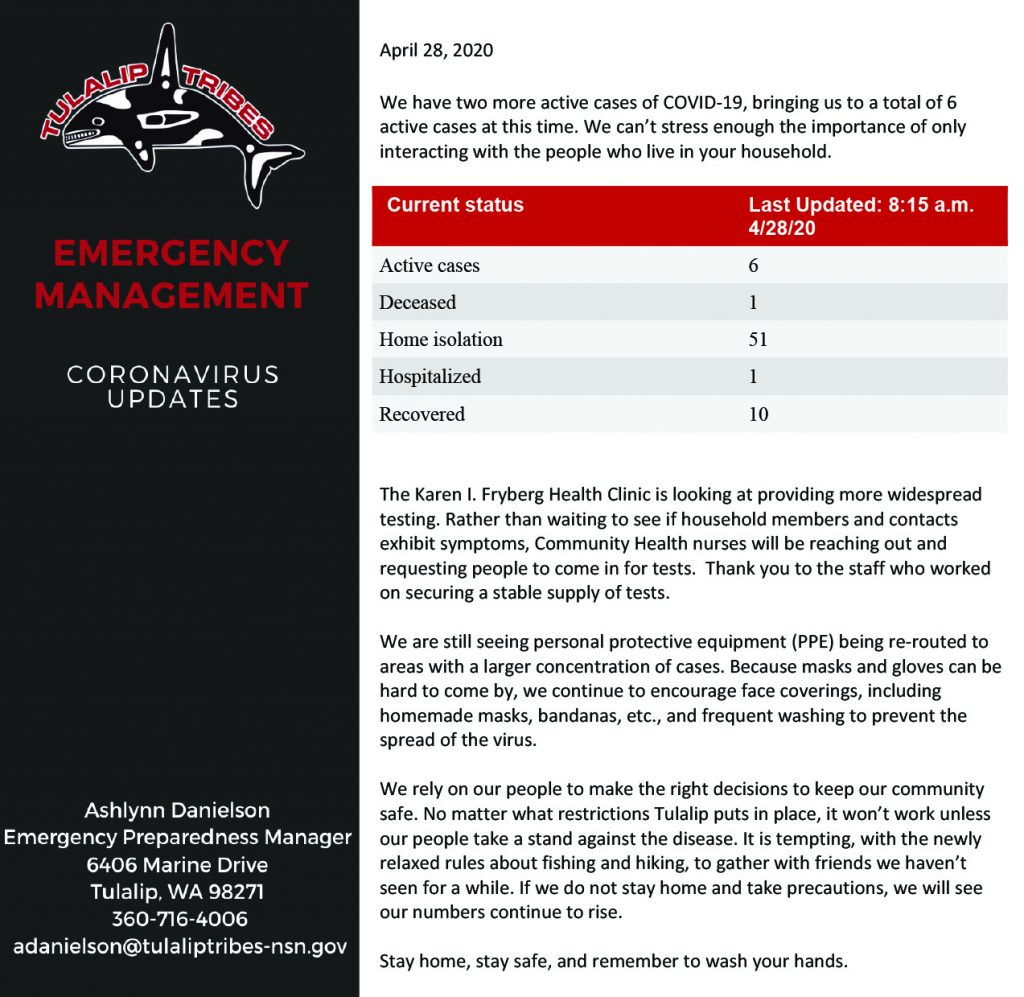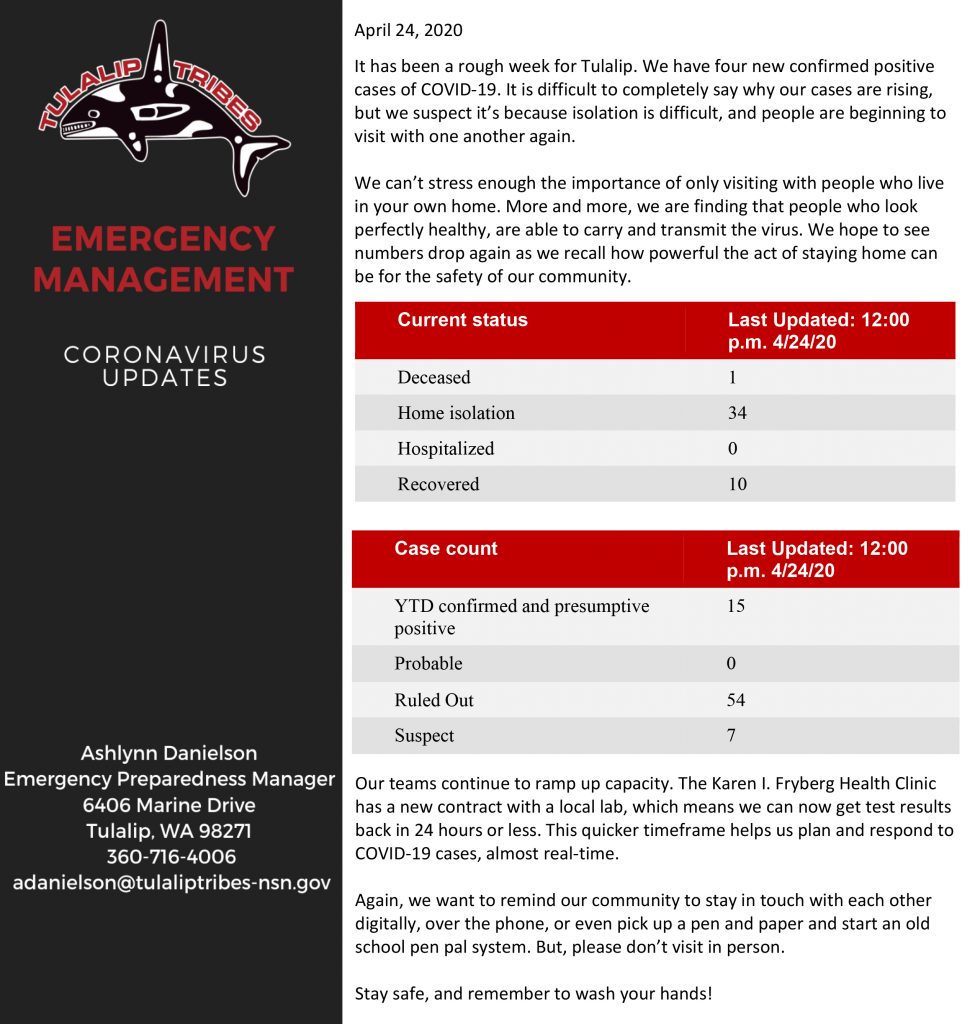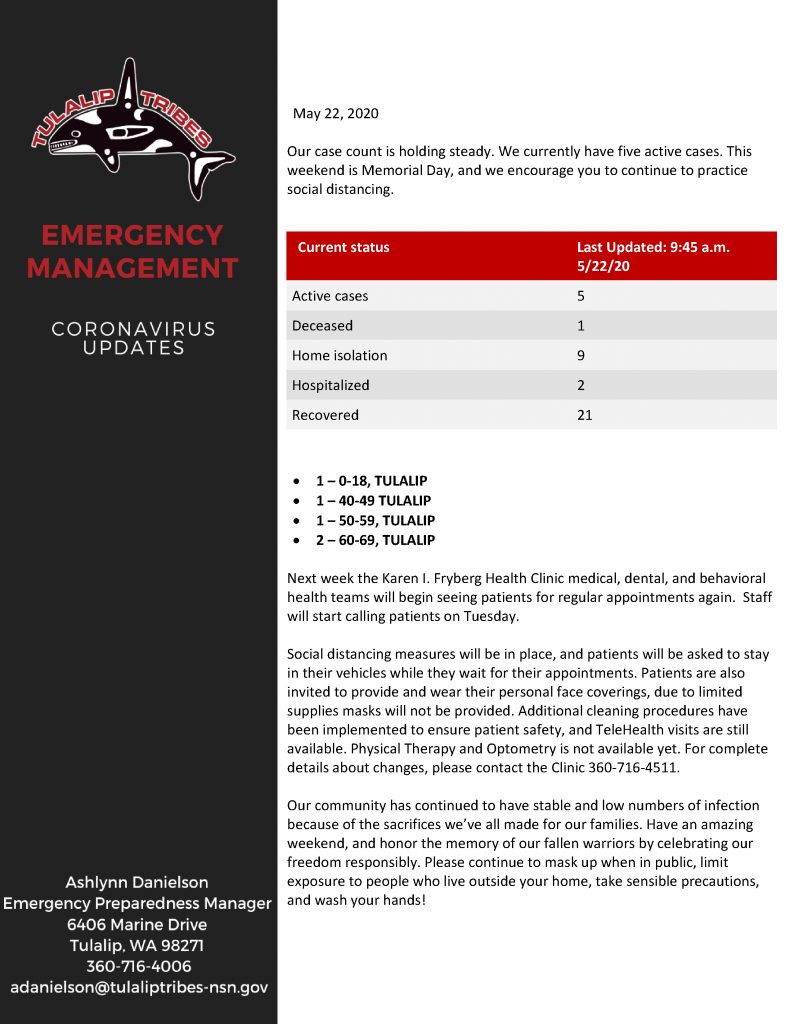
Emergency Management Coronavirus Update, May 22, 2020

syəcəb

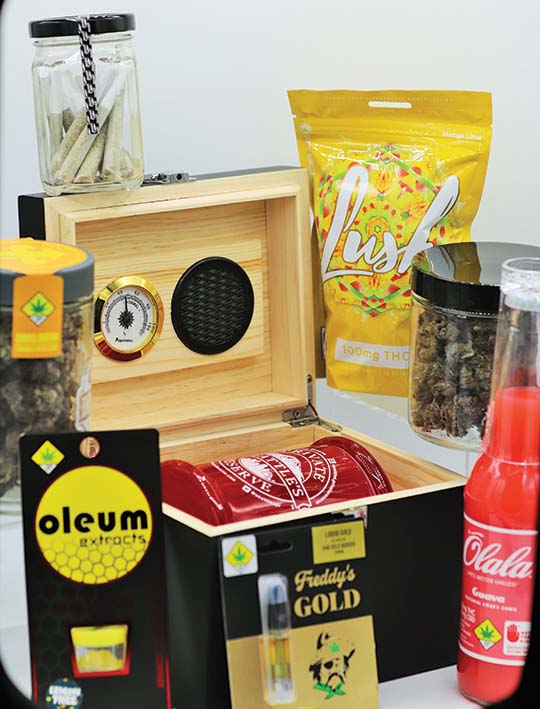
By Micheal Rios, Tulalip News
Twenty-one months ago, the Tulalip Tribes took a major risk by venturing into the cannabis industry and opening one of the very first recreational dispensaries operated in Indian Country. After a rocky start, including switching up multiple management styles and sputtering for its place in local consumer loyalty, Remedy has course corrected under Quil Ceda Village leadership and a new manager truly in tune with cannabis culture.
The timing couldn’t have come at a more opportune time either. With so many businesses still shutdown nationally because of the coronavirus pandemic, Remedy is thriving. Industry-wide cannabis sales continue to skyrocket as a result of society doing its best to cope with the uncertain times brought on by COVID-19 and the residual aftereffects of seemingly endless quarantines, isolation, and social distancing.
“As a store, we adapted quickly to meet the needs of our customers. Practically the same day the casinos were shut down under coronavirus restrictions we launched our online menu and ordering system,” explained Remedy manager and Tulalip tribal member, Jennifer Ashman-Bontempo.
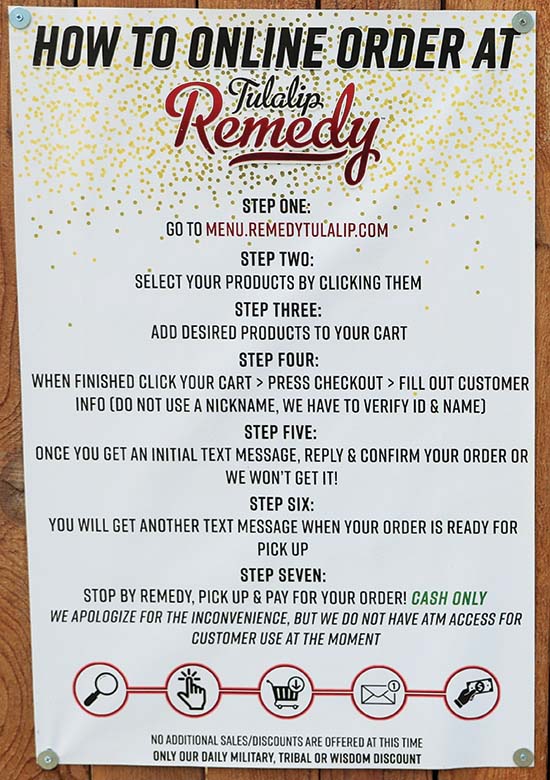
“People love our online system,” she continued. “You can scroll through our entire menu, view the variety of cannabis products we offer, and order based on your personal preferences. After a few short minutes, our staff fills the order and it’s ready for curbside pickup. With this system in place we’ve seen our average ticket price more than double, from an average sale of $30 to now $60-$70.”
Instituting a safe and effective sales system definitely helped Remedy reach new heights as a business. The fact that so many people are left without their usual forms of recreation and entertainment during COVID-19 crisis hasn’t hurt either. It’s become common place to see a line of individuals spaced out 6-feet apart, in accordance with CDC guidelines, wrapping around the store’s front entrance while patiently waiting to pick up their cannabis essentials.
Remedy has benefited from a huge influx of new customers, too. The Tribe’s flagship cannabis store is averaging 500 customers a day with nearly 60% of them new or first-time patrons. Some customers look to relieve every day ailments associated with aches and pains, some search to simply elevate their mental state, while others hope to calm their nerves and diminish anxiety and tensions brought on by the new normal.
“We are becoming people’s favorite store,” boasted Jennifer about the routine compliments her and fellow staff hear on a daily basis. “The combination of our increasing reputation, COVID and online shopping continues to boost our sales. In fact, April 2020 was our best month ever. We had over $750,000 in total sales, with 4/20 being our #1 sales day on record.
“All of us here at Remedy are so grateful to be deemed essential employees and feel fortunate to come to work every day to a place we love,” added Jennifer while proudly wearing a ‘Plant Manager’ t-shirt. “I have the best staff the Tribe could have hired. Everyone loves what they do and are passionate about our products.”
Remedy has 29 total employees, of which 7 are Tulalip tribal members. Most of the budtenders are self-dubbed “pot nerds”. They take much pride in staying up to date with the latest trends and products in an ever-changing cannabis industry.

Tribal member Carmen Miller has worked at Remedy since the very beginning and worked his way up the ranks to become a Buyer. He’s in a pressure-filled position to influence sales, ensure the store is keeping up with or exceeding the completion, and most importantly keeping his finger on the pulse of the consumers.
“From high-THC flower to CBD capsules, from concentrates to an assortment of edibles, we literally have close to everything available in the industry at our store,” said Carmen. “What most people don’t understand is cannabis really is an ever-changing industry. In Washington alone, there are 70 different vendors who each specialize in different products and intake methods.
“From strictly flower to hydroponics to edibles, there are so many types of strains, flavors, and potency levels that can hit the market and become the next best thing,” continued Carmen. “Whatever’s the newest or most popular thing in cannabis, that’s what the people want to try. The newest product we just got in is a super discrete method of intaking cannabis through a micro-dosing inhaler. They have no visual smoke or any smell, so it’s perfect and easy to use for those wanting to maintain their privacy.”
The Tulalip Tribes’ long-term vision with cannabis is bold. Tribal leaders see the promise of cannabis outside of recreational retail, including therapeutic applications of CBDs for the relief of seizures and PTSD, as well as promising research into the possibility of treating many of the health conditions that most affect Native communities, including addiction and diabetes.
Balancing traditional values with the realities of the 21st century means embracing a changing culture that views marijuana and cannabinoids as natural medicines, especially when compared to prescription pharmaceuticals. Pharmaceuticals with countless side-effects and man-made chemicals that receive FDA approval, only to come out later those same chemicals cause a litany of damaging health concerns with possible fatal consequences.
Longtime cannabis connoisseur and Budtender supervisor for Remedy, Juan Martinez has had lots of experience assisting customers who are looking to alleviate a variety of common ailments, from headaches and insomnia to much more life threatening forms of cancer.
“Migraines and cluster headaches are the most common illness our customers want help with, followed by insomnia, those who have trouble sleeping, and pains associated with arthritis,” shared Juan. “There’s even a regular we look forward to seeing every few weeks. He’s an 80-year-old with lung cancer and comes to us for his cannabis treatment plan. According to him, high-dose cannabis intake helps offset his chemo and makes his quality of life much better. Customer stories like this is why I love my job; being able to sell the best products and changing people’s lives for the better.”
There’s a mountain of anecdotal evidence to suggest soothing THC/CBD oils, tinctures, and Indica-based flower can offer tremendous health benefits as an alternative treatments for common physical and neurological disorders. Tulalip’s partnership with the brightest minds at Stanford University resulted in a one-of-kind medical cannabis research project with the ultimate goal being to cure opioid-based addiction. Preliminary results have been encouraging.
So whether it’s to find a Remedy for a pre-existing medical condition or simply to find rest and relaxation through the COVID crisis, the knowledgeable staff of Tulalip’s own dispensary is here to guide novice and experts cannabis users alike through their wide-range of convenient products.
Remedy’s current hours of operation are Monday – Saturday, 9:00am – 9:00pm and Sundays 10:00am – 8:00pm. Products can be viewed and orders placed online at menu.remedytulalip.com Tulalip tribal members receive a 30% discount every Thursday.
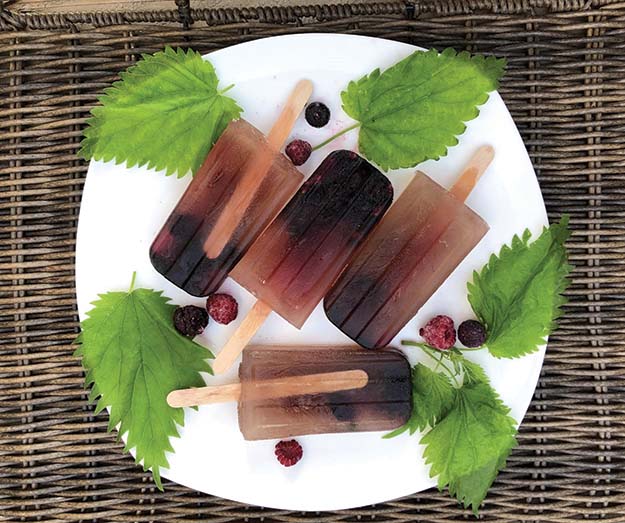
By SNAP-Ed Program Coordinator, AnneCherise Jensen
Looking for a healthy, fun and creative way to try Nettles this summer? Check out this Nettle Berry Popsicle recipe. It’s the perfect healthy summer snack for kids! As warmer weather approaches, this is a great way to turn any herbal tea into a crisp, refreshing treat for your friends and family. Since Nettles are in abundance this time of year, this is a great activity for not only in the kitchen, but outside as well. So grab your basket, gloves, and scissors and check your local woods for a nearby Nettle Patch! We have some wild crafted popsicles to make.
Foraging Nettles
Stinging Nettle, or sc̓ədᶻx̌, has been used as a traditional Coast Salish medicinal plant for thousands of years. This highly valued plant is often found in streambeds, forests and disturbed areas with rich wet soil, usually facing the sun. Stinging Nettles, can be found from the coast to the mountains, and are found in abundance on the lush Tulalip soils. Stinging Nettle, scientifically named Urtica diotica, is a perennial herb with opposite deep green leaves with serrated edges and tiny greenish flowers. The stems are square, and plants grow 3-7 feet tall annually.
Harvesting season runs March – June each spring. Once the Nettle plant begins to seed in the warmer summer months, the leaves can only be used for drying purposes. If consumed raw past this point, nettles can be toxic to the liver and kidneys. When harvesting Nettles, be sure to wear thick gloves as they will sting you! The stalk and underside of leaves are covered with stinging hairs that rise from a gland containing formic acid. Avoid harvesting in areas that are nearby pollutants, roads, pesticides and other chemicals. Cut off only the first 6 inches in the top of the plant. We do this to protect the plant and make sure it grows back the following year. Once you have your basket filled, the nettles can then be processed by blanching, drying or simply steaming them. Any of these methods will inhibit the formic acid glands (stingers) from stinging you. In this recipe, we will be using dehydrated nettles to make a sweet Nettle tea.
Dehydrating Nettles
When dehydrating Nettles, we want to use only the leaves of the plant. The stems are generally not used for food purposes, but can be used for making nets or are effective in compost. There are a few ways to dehydrate herbs; air-dry, dehydrate or an oven-dried method. All methods work effectively, but vary on resources and preference. I personally like to air-dry my herbs, but it can take up to a week. Either way, whatever way you choose, be sure to rinse your foraged herbs in a colander before drying. This also allows any bugs to escape that may be hiding in your basket. P.S. don’t forget to wear gloves – this is the prickliest process of all.
Dehydrator/Oven Method: Using heat is the quickest way to dry herbs. The dehydrator method requires a heat of 120-140 degrees F for about 12 hours in your average dehydrator. If you don’t have a dehydrator, you can also use an oven. Place herb leaves on a cookie sheet one inch deep or less. Put herbs in an open oven on low heat, less than 180 degrees F, for 2-4 hours. To see if the herbs are dry, check if leaves crumble easily. Oven-dried herbs will cook a little, removing some of the potency and flavor.
Air-Dry Method: Gather 5-10 branches together and tie with string or a rubber band. The smaller the bundle, the easier and faster they will dry. Put the bundle of herbs, stem-side up and hang them by the stem in a warm, well-ventilated room. You can do this by using string and clothespins, amongst other things. Your herbs may be dried and ready to store in as little as one week. This is personally my favorite method, as it preserves the potency and flavor of the herbs.
Nutritive Properties
Nettles are known to be one of the most nutrient dense plants on the Earth and are considered a super food in many cultures throughout the world. They contain a wide range of vitamins, minerals and antioxidants that help maintain the body’s function and mobility. Nettles also contain a high amount of amino acids that are highly valuable chemicals used in the pharmaceutical, cosmetic and food industries. Nettles contain extremely high amounts of Vitamin C, vitamin A, Vitamin D, iron, sodium, potassium, phosphorus, calcium (29 times more than spinach), magnesium, silica, trace minerals and protein (more than beans). No wonder they are called a superfood! If you aren’t already consuming nettles, you should be. (Krohn)
Medicinal Uses
Traditionally, Nettles have been used both internally and externally for a wide variety of uses. Nettles have been revered worldwide throughout the ages for food, fiber, and medicine. Many people say Nettles help to alleviate allergies as they contain antihistamine qualities that may be effective for acute allergic reactions. Other well-known uses of Nettles that are still being studied include; the strengthening of teeth, bones and hair, insulin resistance in Type 2 Diabetes, prostate health, blood detoxifier, increased hemoglobin for overall energy, reduced pain, menstrual cramp aid, and asthma. (Foret)
Other Uses
This plant is so versatile, it’s even been used to make natural dye with shades ranging from yellow to deep green. The nettle fibers/stem makes strong cordage and was used for making rope, fishing line and nets. Rosemary or horsetail with nettle are made into tea and used as a hair rinse to make the hair glossy and stimulate growth. “Sting yourself on purpose… really? Yes, it is true. People have stung themselves with nettle to ease pain. This is officially called urtication and its roots go deep into history on several continents.
Both in the Pacific Northwest and in Europe, people have stung themselves to cure arthritic joints and to stay awake and alert during battle or hunting. Traditional knowledge is now validated by scientific research. Compounds including histamine, acetylcholine and formic acid are injected into tissue causing an awakening of cellular responses, lymph flow, and nerve and capillary stimulation”. (Krohn)
As you can see, Nettles are a highly prized and sacred plant that can help keep you and your family healthy. Now that you’ve learned a little more about Nettles, it’s time to put your foraging skills to the test. Here is the summertime recipe you and your family will love.
If you are a Tulalip tribal member, and don’t have access to nettles but would like some, please contact AnneCherise Jensen and she will supply you with the dehydrated nettle tea.
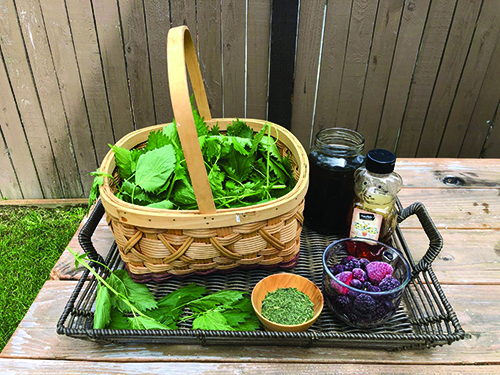
Nettle Berry Popsicles
Ingredients
Directions
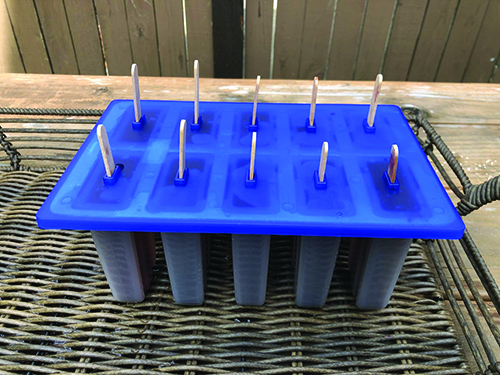
**This material was funded by USDA’s Supplemental Nutrition Assistance Program – SNAP. This institution is an equal opportunity provider.
Sources:
http://wildfoodsandmedicines.com/nettle-restorative-food-purifying-medicine-guardian/ / Research provided Elise by Krohn
The Alchemy of Herbs, Rosalee De La Foret, pg 189 – 194
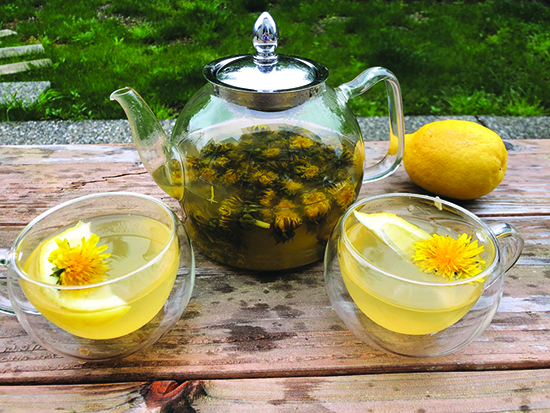
By SNAP-Ed Program Coordinator, AnneCherise Jensen
Dandelion plants are often regarded as a common weed or annoyance in one’s yard. They are also known for making special wishes when blowing off their whimsical dried petals in the summertime. Believe it or not, dandelions are also one of the oldest nutritive and medicinal plants in the world. Dandelion, or the scientific name Taraxacum officianle, first originated in Europe and were brought to the Americas in the early 1600’s.
Though this plant is often overlooked, dandelions contain a wide variety of vitamins, minerals and antioxidants. If harvested properly, dandelions can be used for a wide variety of health and wellness purposes. The best part about it, is that it’s FREE!
One of the most amazing properties about dandelions is the fact all parts of the plant can be used. The flowers are edible, having a semi sweet yet bitter taste. The leaves are also edible, and can be thrown into salads, smoothies and soups. The roots are also frequently used. Often they are dehydrated and used into a tea, vegetable broth or a tincture. Roasted dandelion roots can also be used as a coffee substitute, tasting very similar to regular coffee beans.
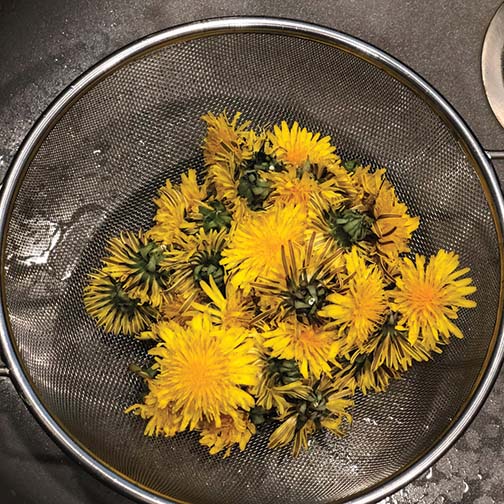
Foraging Tips
Harvest in areas that are chemical and pesticide free. When consuming a wild edible, you want to make sure its organic properties are free from any harmful compounds.
Avoid harvesting by popular trails or parks. Don’t forage in areas where dogs and other animals frequently visit. You don’t want to consume any plants that may have been urinated or defecated on by an animal.
Be sure to bring a basket, pair of gloves, hand shovel and scissors. Bring your phone to take some pictures and share your experience to friends and family online as well.
Only harvest what you will use and never take more than you need.
Health Benefits
Dandelions are a great source of vitamins, minerals and antioxidants. The leaves and root contain high amounts of Vitamins A, C, K and B Vitamins, as well as many minerals including magnesium, zinc, potassium, iron and calcium. Dandelions have a long history of use for problems of the liver, gallbladder, and bile ducts.
Today, Dandelion is a dietary supplement used as a blood “tonic,” as a diuretic, for minor digestive problems, and other purposes. Other recorded, but not well studied, uses of dandelion include blood sugar and hormone regulation.
During this time of quarantine, now is the perfect opportunity to try something new. The following recipe is a great way to incorporate dandelions into your diet. Try this at home with your family, use up some of those dandelions that are close to your home, and enjoy a refreshing spring time beverage.
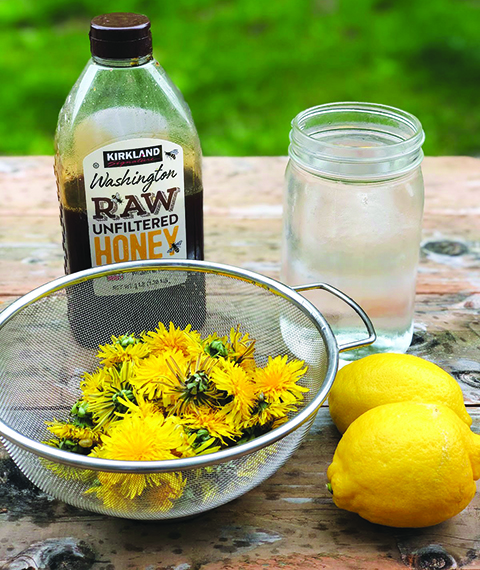
Recipe: Dandelion + Honey + Lemon Iced Tea
Ingredients:
Directions:
**This material was funded by USDA’s Supplemental Nutrition Assistance Program – SNAP. This institution is an equal opportunity provider.
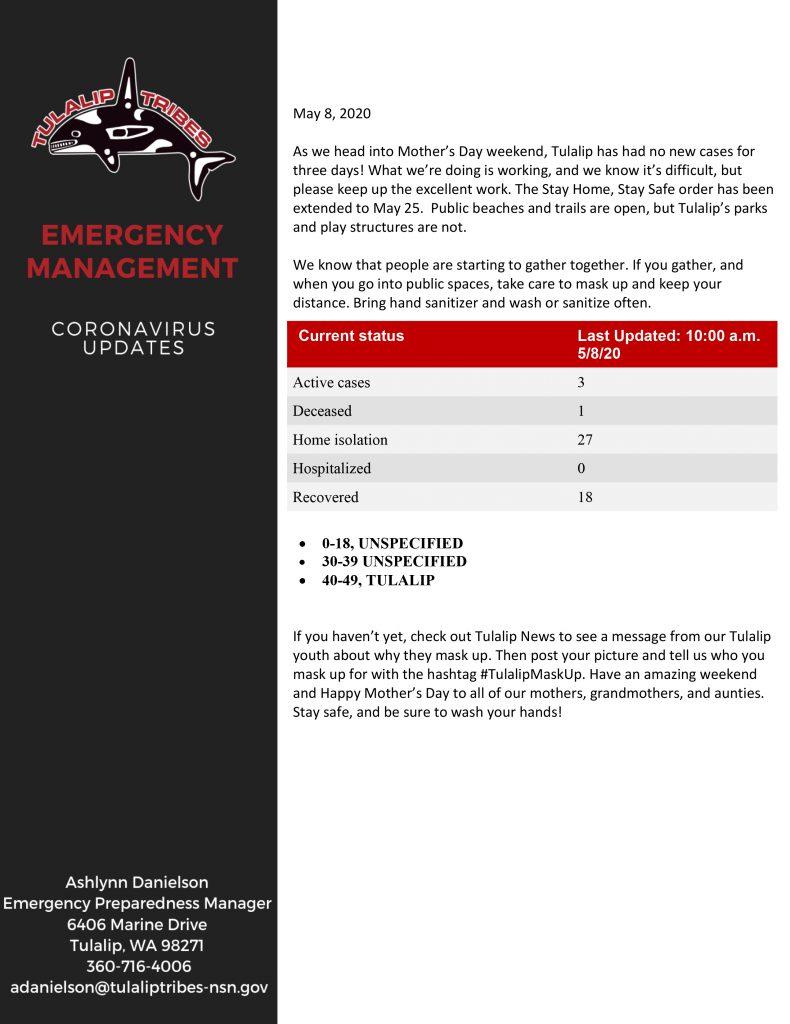
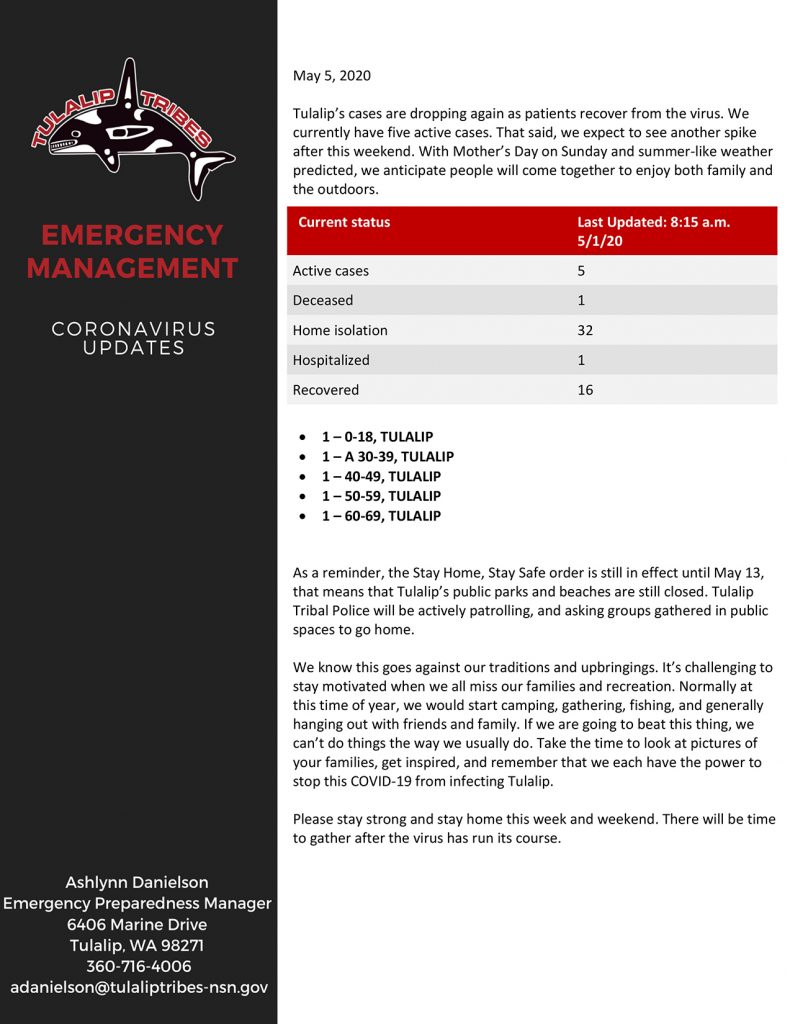
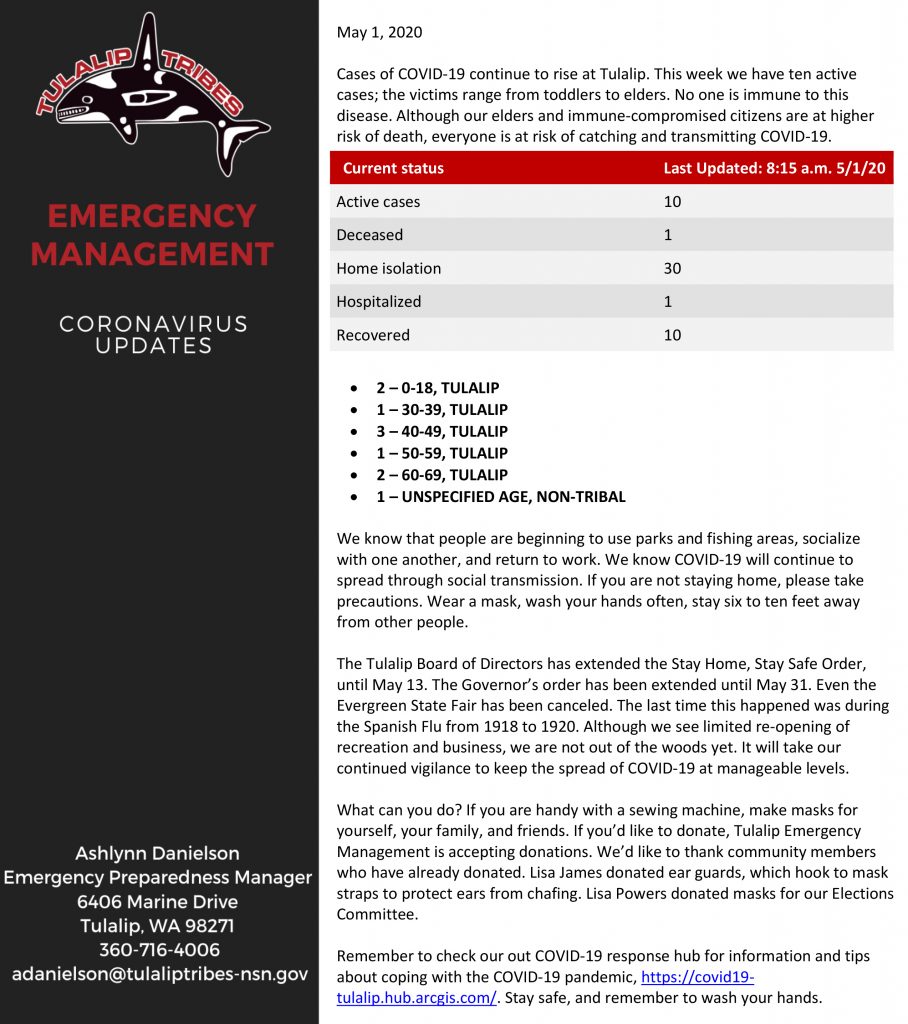
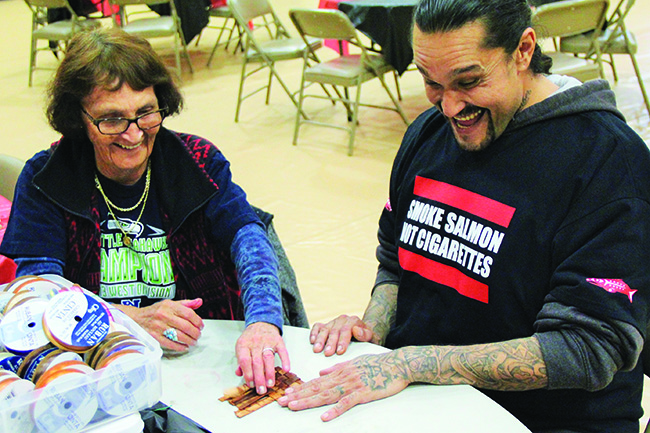
By AnneCherise Jensen, Photos by Micheal Rios
Oftentimes people use the excuse, “I just don’t have enough time” when it comes to achieving goals. Important goals like getting enough exercise, eating healthy and cooking nutritious meals are often put aside. Fortunately, during these unprecedented times, we have been blessed with an abundance of time to tackle these goals firsthand. Though we are not able to control things like our jobs and the economy, we can control our health by practicing preventative lifestyle choices.
For anyone reading this article, I challenge you to spend a couple hours a day practicing and developing healthy habits that will benefit you and your household. Not only will you feel better physically, but chances are you will feel better mentally as well. The best way to start, is to set small, tangible goals. Try one new habit every day. The more you do them, the easier and more natural they become.
Self-Discipline:
In order to obtain and tackle goals, we must set in motion actions of self-discipline. Self-discipline is the ability to control one’s feelings and overcome one’s weaknesses; the ability to pursue what one thinks is right despite temptations to abandon it. However, this can often be the most challenging process. The upside is once you start to slowly tackle your goals, it tends to get easier and easier. With trial, error and repetition, proactive healthy lifestyle choices will eventually become habits. Taking accountability for your actions, understanding failures are inevitable, and having the courage to stand back up again is a huge part of the process. Whatever you do, don’t give up on yourself. If you can, find a support group of friends and family who will encourage you along the way. Encouragement from loved ones will help keep you motivated and accountable. Remember, you CAN do this!
Regular Sleep Schedule
A regular sleep schedule is extremely beneficial to our overall health. The CDC recommends 7-10 hours of sleep per night for adults. Even though staying up late and oversleeping can be tempting during this time, it is also a slippery slope to feelings of anxiety and depression. A poor sleep schedule could lead to unwanted weight gain, increased sedentary behavior, and unwanted hormonal imbalances. Sleeping while it is dark out helps keep us on our natural, rhythmic, hormonal sleep schedule. For best sleep, put electronic screens down 60 minutes before bed and stretch for at least 15 minutes before lying down. Experimenting with a variety of essential oils / oil diffuser can also help create a calm and peaceful night’s rest. I personally like to put peppermint and eucalyptus oil on my forehead before going to bed, it helps me get a solid night’s rest.
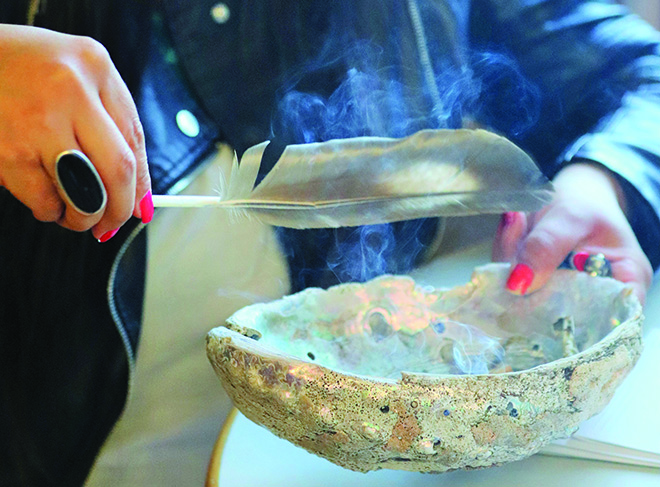
Organized Clean Spaces
Cleaning your home is a great way to stay busy and optimistic during the quarantine closure. Not only that, but it can help ease feelings of depression and anxiety. Personally, it is a great way to help me destress. Having a clean space is a key to inviting a happy, peaceful and calm atmosphere into the home. It is important at this time, we are also keeping our homes as germ free as possible. We want to limit germ and viral interactions as much as possible to prevent illness. I challenge you to spend at least 30-60 minutes a day cleaning and/or organizing your home.
Three Nutritious Meals a Day
Now is the perfect time to pass on cooking skills to your children and loved ones. Practice making family meals together at home. Have meaningful conversations at the dinner table. Share favorite recipes with friends and family, it’s a great way to stay connected. Try making twice the amount of portions so you have leftovers for the next day. Practice finding the perfect balance of fruits and vegetables, whole grains, lean proteins, dairy and healthy fats. For more details on a healthy diet, check out ChooseMyPlate.gov for USDA guidelines.
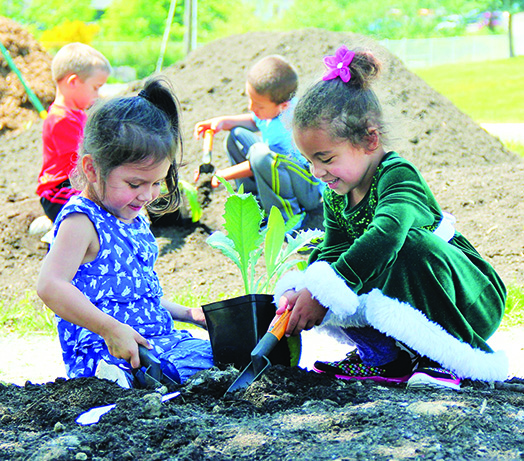
Fresh Air + Sunshine
Opt outside! Enjoy the fresh air and sunshine while getting a healthy dose of Vitamin D. Many of us who live in Washington State tend to have a Vitamin D deficiency. Now more than ever is the perfect time to soak up all the extra sunshine and replenish those low levels. Vitamin D/sunshine is great for mental clarity, healthy skin, and strengthening our bones. Though many local parks and trails are closed, we are free to explore areas in nearby neighborhoods. Take a walk in the woods, explore nearby beaches that are open, and remember to stay six feet away from others.
Physical Activity
Physical activity really is the best medicine! Physical activity helps boost the feel good hormones in our brain, helping us feel more content and happy. Physical activity can also help us sleep better while preventing us from a wide variety of chronic diseases. The CDC recommends 150 minutes a week of brisk physical activity and at least two days a week of activities that strengthen muscles. Activities you could do at home include going on a walk, gardening, foraging, playing with your kids, home improvement projects, online fitness classes, yoga, walking your dog and even organizing/deep cleaning can count! If interested in online fitness classes, check out the YMCA online page for a wide variety of classes, from easy to moderate levels. www.ymca360.org/
Limit Sweets, Salts, Alcohol, Processed & Fast Foods
Too much of these foods can make us feel tired, groggy and even grumpy. Excessive amounts of sugar, salt, alcohol and unhealthy fats are bad for our health. Too much of these things could lead to weight gain, Type 2 Diabetes, Heart Disease, stroke and certain types of cancers. With the Covid-19 virus lingering, it’s important we limit these foods as much as possible to help keep our immune system healthy and strong. Our bodies are more resilient to disease when we feed them properly.
Drink Lots of Water
Getting enough water every day is very important to our overall health. The CDC recommends we drink at least 8 cups (½ gallon) of water per day. Water is the healthiest beverage choice for many reasons. It helps eliminate toxins and unwanted bio waste lingering in organs. Water helps regulate the digestive system, lubricate the joints, regulate blood sugar, lowers body temperature when needed, maintains electrolyte balance and boosts overall energy. Try drinking at least one 1-2 cups of water with every meal to help keep yourself hydrated.

Limit Screen Time
The average person generally consumes 7-9 hours’ worth of screen time per day. However, the CDC recommends only 1-2 hours of screen time per day for teens and adults. Though it can be hard for many individuals working at home, try putting your phones and electronic devices down as often as you can. Go outside and play, have a picnic, read a book, play a board game, or practice your favorite hobby instead. It’s good for the brain.
Be Kind + Positive
Practice gratitude, forgive, use positive language, encourage others, be intentional with your time. Share love, be loved and use loving words. These are scary times, the more joy and happiness we share with others, the easier we can all get through this TOGETHER!
Again, if you aren’t already, I challenge you to fill your days with as many of these healthy lifestyle habits as possible. I promise, you won’t regret it. If you would like help setting up healthy habits, need assistance with healthy recipe ideas, or would like some words of encouragement at this time, please feel free to email me at ajensen@tulaliptribes-nsn.gov I am available Monday through Friday, 9am–5pm.
**This material was funded by USDA’s Supplemental Nutrition Assistance Program – SNAP. This institution is an equal opportunity provider.
